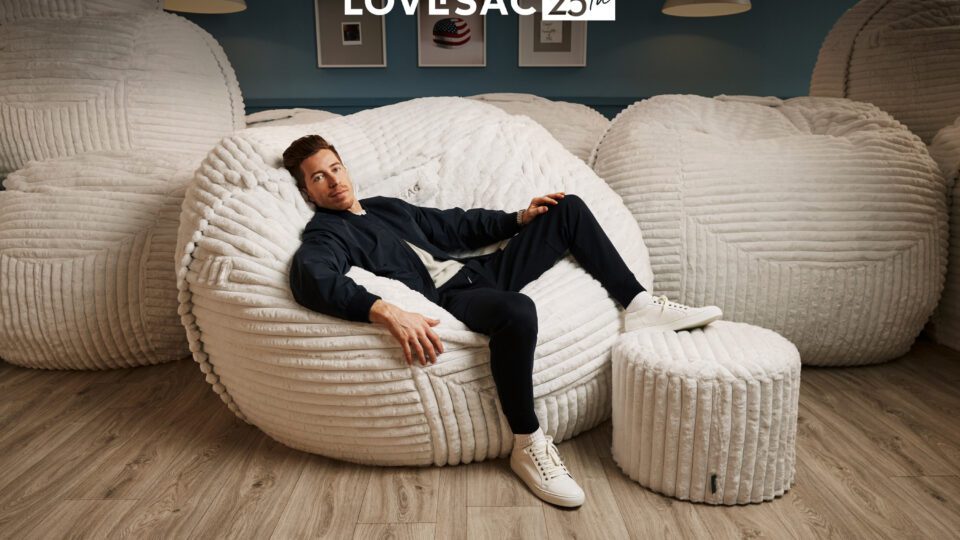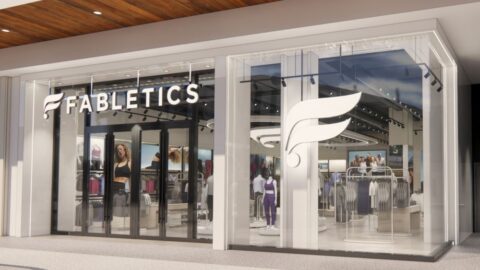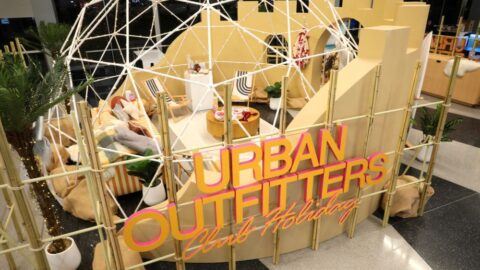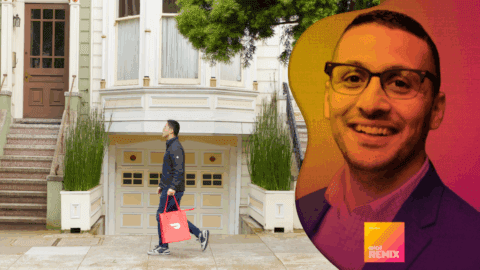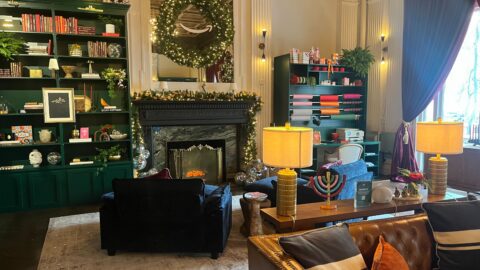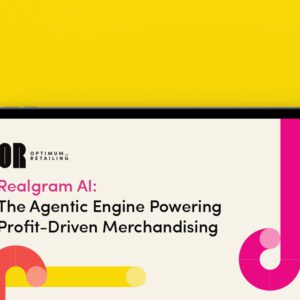The origin story of furniture brand Lovesac is one of those great “started in the parents’ garage” sagas full of ingenuity, passion and luck. As in many of those tales, the company became a success, but in the case of Lovesac there’s a lot more to the story.
Lovesac has reached the ripe age of 25 at a moment of great upheaval in consumption culture, when consumers’ wants are butting up against environmental and ethical needs. And somewhat by accident, through all the twists and turns in its evolution, Lovesac has landed on a product that meets the moment.
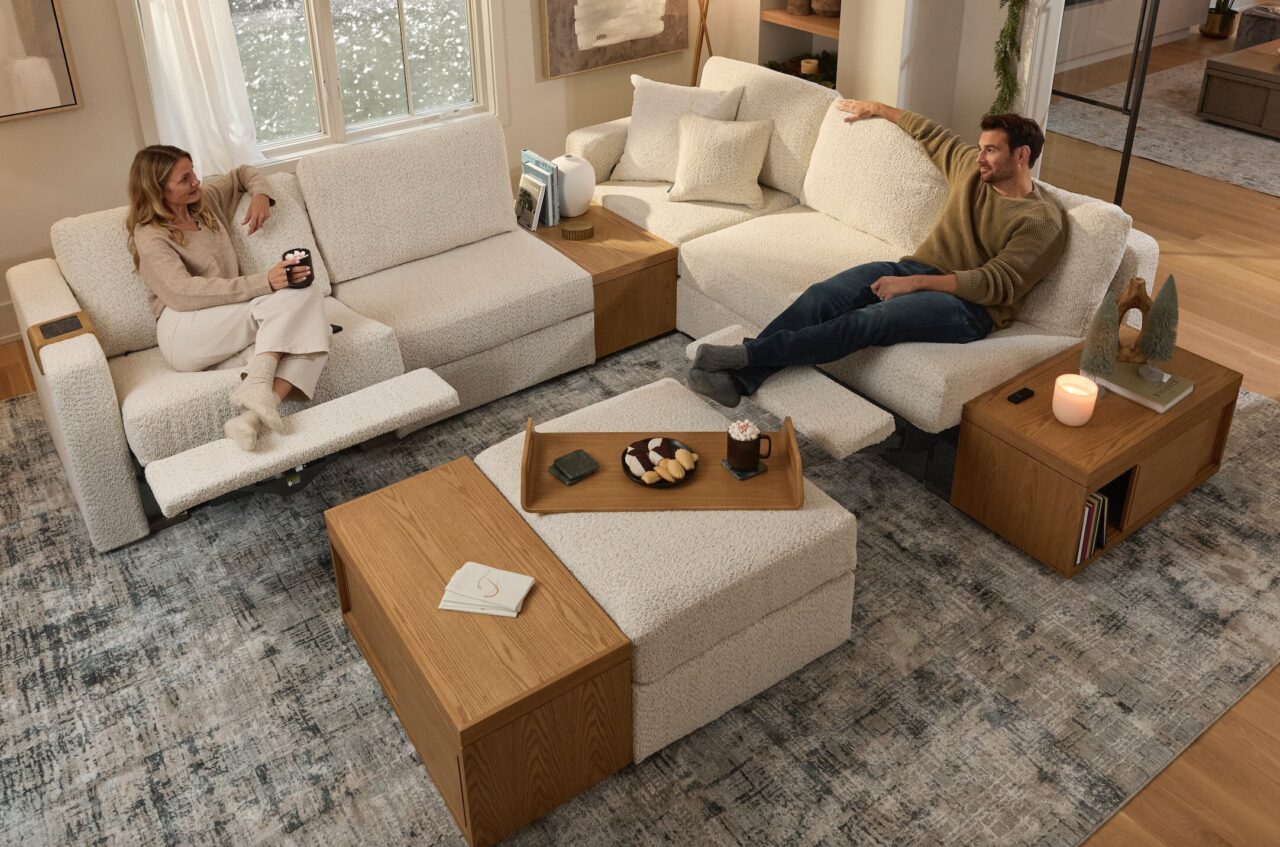
(Image courtesy Lovesac)
“We kind of inadvertently invented a couch that could be with you the rest of your life,” recounted Lovesac Founder and CEO Shawn Nelson, discussing the development of the “Sactional” — the company’s take on the classic sectional couch. “It’s built to last a lifetime, because it’s been designed to evolve as your life changes. Right now across from me, I’m looking at a couch with pieces that are 17 years old. They’re mated with brand-new pieces, they’re mated with StealthTech [more on what that is later] and they’re on their 10th set of covers, but they look new, they smell new — you’d have no idea. There is no other couch in the world that can do that.
“That philosophy — things built to last a lifetime, designed to evolve — drives us now and gives us a path to compete with everyone else in a way that no one else is doing, or frankly, I think, willing to do, because it’s difficult,” Nelson added in an interview with Retail TouchPoints. “It’s costly to design this way, to retail this way. But if you can master it…I mean, [based on our intel] the Sactional is the best-selling couch in the U.S.”
The brand’s “Designed for Life” philosophy carries all the way from product design to how it builds and runs its stores. It’s become Lovesac’s driving force and what Nelson believes will propel his company into the next 25 years. The story of how Lovesac arrived at this raison d’être is full of twists and turns, but it’s that very winding road that has made the company what it is today, so that is where we will start.
Back in 1995, a College Student Made a Really Big Beanbag…
…so big it could fill a room, or least make a sizeable dent in a den. It took three weeks to make and when Nelson ran out of bean bag beads, he filled the rest with pieces of foam camping mattresses chopped up with a paper cutter. He then took it everywhere with him, and “everywhere it goes, everyone wants one. That was my market research,” Nelson said.
Three years later, Nelson created Lovesac to fill his first commission for a neighbor “who had seen it go up and down the street a bunch of times and wanted their own.” He then took the concept on the road to boat shows, trade shows and the like, selling a few here and there but primarily funding the endeavor by waiting tables. When he graduated, better-paying employment awaited, but he gave it one last stab at a trade show and got his first real order, for 12,000 units. “They didn’t know it was just me, a buddy and a woodchipper, shredding this stuff in the back of a furniture factory that tolerated us.”
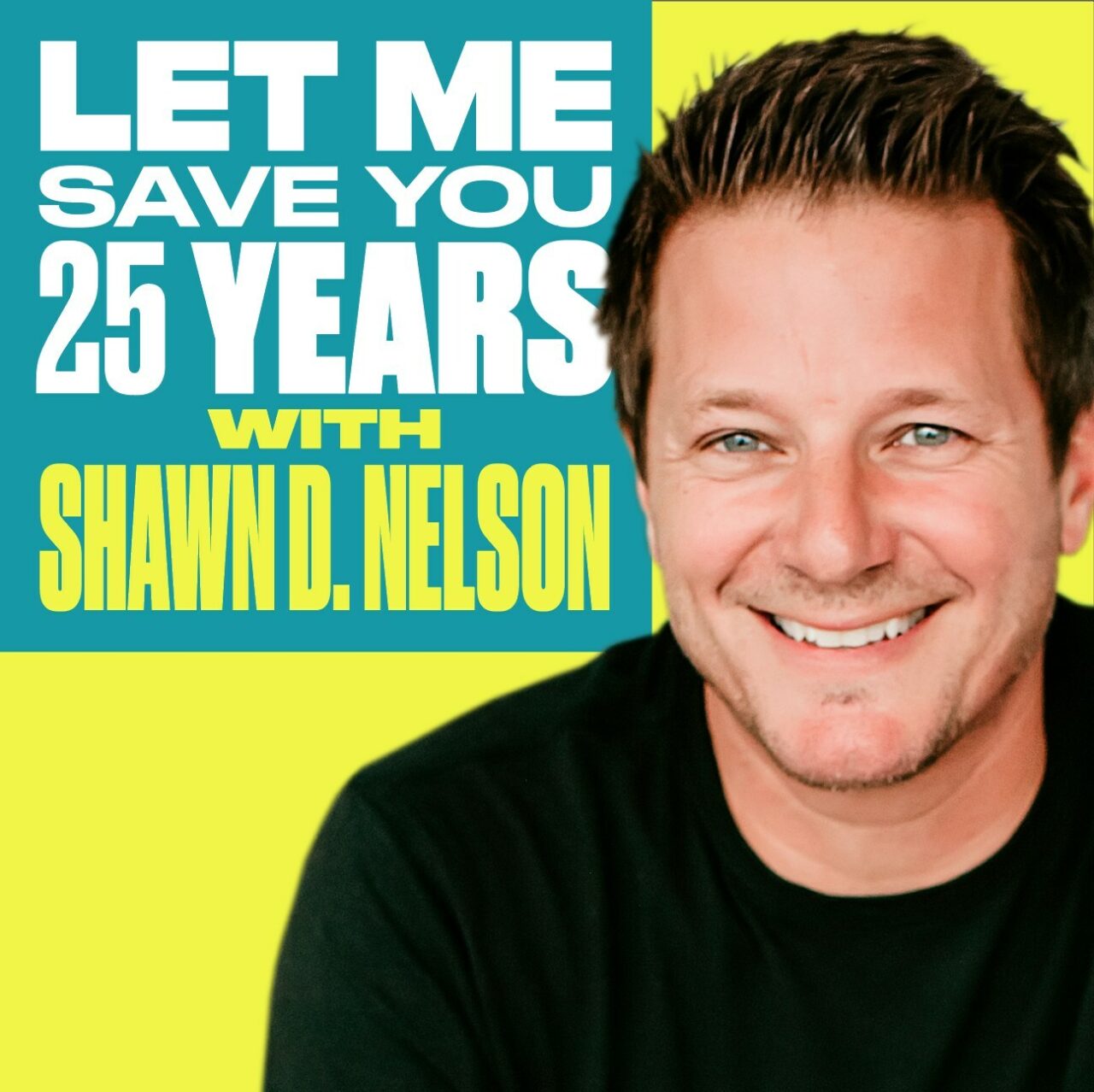
It was clear that Lovesac needed a factory and more affordable textiles, so Nelson flew to China to source the fabric and filled the order using old farm equipment. He didn’t make any money, but he broke even, and now the company had a factory. The next logical step was to go to retailers, but “they didn’t want to sell our stuff and thought our name was stupid,” so Nelson kept the name and opened his own store at the Gateway Mall in Salt Lake City with a product that was about one-eighth the size of the original, which meant it could be shipped.
“The store just ripped,” said Nelson. “We were on track to do more than $1 million bucks in our first year, which in the mall was pretty good. We had a couch in the corner just [to make the store] look pretty, but people kept trying to buy the couch. It obviously got us thinking.”
Years later, the Sactional entered the scene, “which was really just our attempt at putting a couch in a shippable solution,” said Nelson. In the middle of all that was a pretty eventful series of twists and turns that Nelson summarized succinctly: “Raise venture capital. Raise private equity. Complete Chapter 11 reorg, venture capital wanted us to start over. Won $1 million on national TV with Richard Branson (he had a reality show that was kind of like Trump’s Apprentice), and then fought our way up in a very long, drawn out attempt to be a furniture brand with the name Lovesac, selling kind of expensive couches across the hall from Pottery Barn.”
The DTC movement provided the final breakthrough, helped by the fact that the brand’s products were already designed to be shippable. “We converted all of our stores to showrooms where you’re just there to experience it, understand it, plan it. We’ll check you out there or you can buy online, we don’t care. It’s truly an omnichannel direct model, and sales exploded,” to the tune of a “40% kegger since 2015,” as Nelson put it, with the exception of the post-COVID period when furniture sales on the whole have slumped.
Despite that, Lovesac is eking out positive growth each year, and “90% of it’s on the back of Sactionals,” said Nelson. Now the company has launched “StealthTech” — sound and charging systems designed to be integrated into existing or new Sactionals. The tech costs about $3,000 extra on top of the couches, which can run anywhere from $5,000 to $15,000 but “those kinds of metrics out of 800 square feet with five employees ends up being $2, $5, $10 million [in annual sales at some stores],” said Nelson. “This is good math, and it’s allowed Lovesac to be radically competitive in this realm and afforded us the path toward a purpose that’s really quite unique in this Designed for Life philosophy that came out of Sactionals.”
Stores Designed to be Sustainable Showrooms
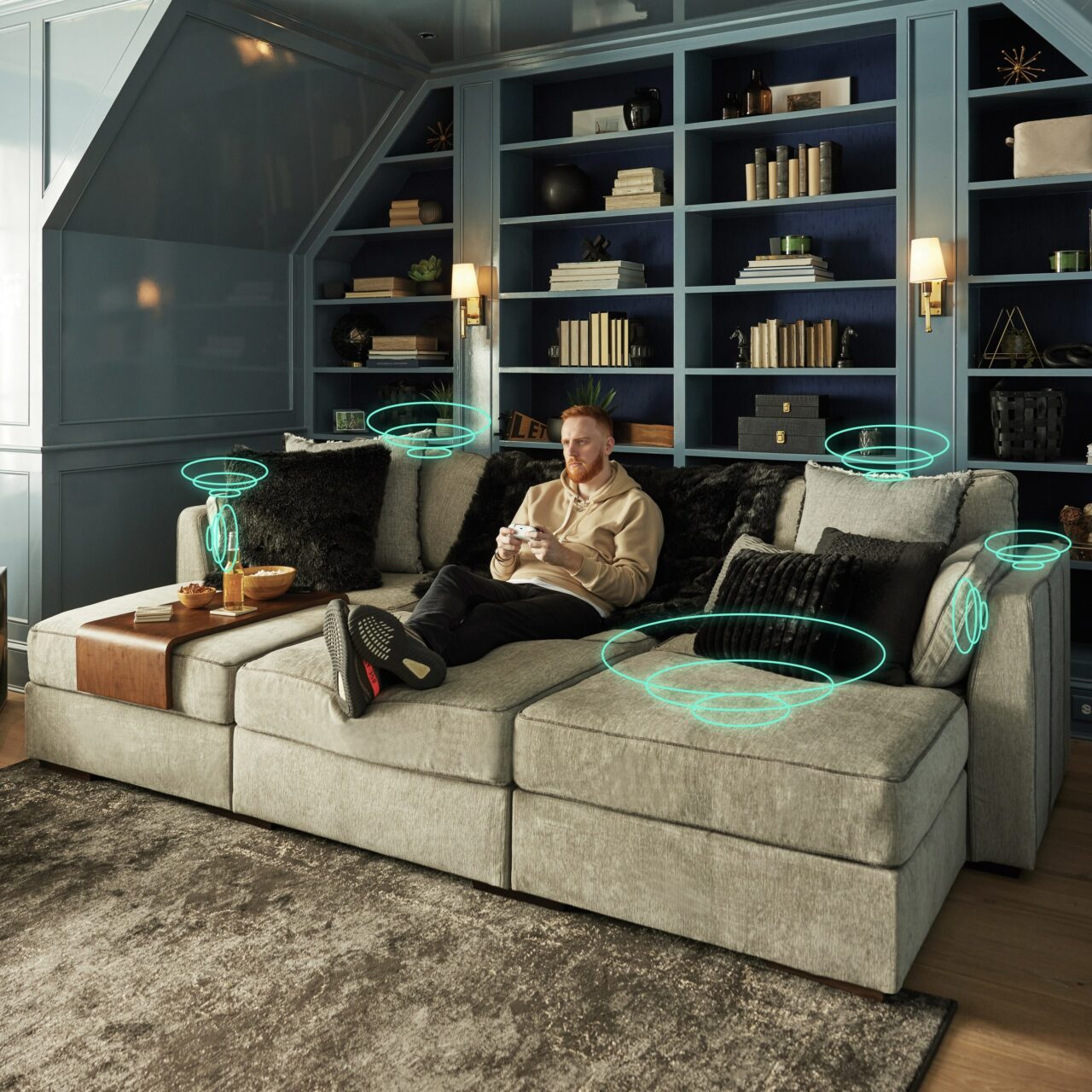
Today Lovesac has 250 stores and another 50 shop-in-shops at Best Buy that are operated by the brand. “The StealthTech product makes it hyper relevant for Best Buy,” explained Nelson. By the end of this year Lovesac will have opened approximately 30 new locations, and Nelson believes the brand has a path to at least 400 stores in total.
Those stores carry through the Designed for Life principle with sustainable materials, LED lighting and energy-efficient systems, even in the build out process: “Retail is gross; people just blow these places out to re-skin them with their own storefronts,” said Nelson. “We have to do that to some degree because the centers demand it, but we try to use existing architecture, we try to do less demolition and we try to dispose of stuff responsibly.
“Plus, I won’t say we pioneered it, but we are certainly on the cutting edge of small footprint, highly efficient retail spaces meant not to sell you stuff, but to allow you to experience the stuff and to plan to buy it,” Nelson added. “This is a true omnichannel, no-channel-conflict execution, even in the way we pay our people. They’re not on commission, but they are incented as a team to help you learn about the product. If you purchase through any platform, as long as they did their job right, they’ll get credit for that, and they’ll feel it financially. It creates both a highly effective sales environment and a low-pressure sales environment.”
It also has led to incredibly low turnover among store staff. “This is a unique way to approach retail and it’s been pretty successful,” said Nelson. “We’re doing many multiples of what most furniture stores do on a sales-per-square-foot basis.”
The brand racked up $700 million in sales last year and has seen 7X growth since it went public in 2018, and Nelson expects that growth to continue this year. “We’re not huge, but we’re not tiny,” he said. “We’re trying to get really big, but stay small, and all of this comes back to an ethos, a purpose that can simultaneously generate strong business results and make the business sustainable so it can be around for another 25 years.”
Opposing the Idea of Planned Obsolescence
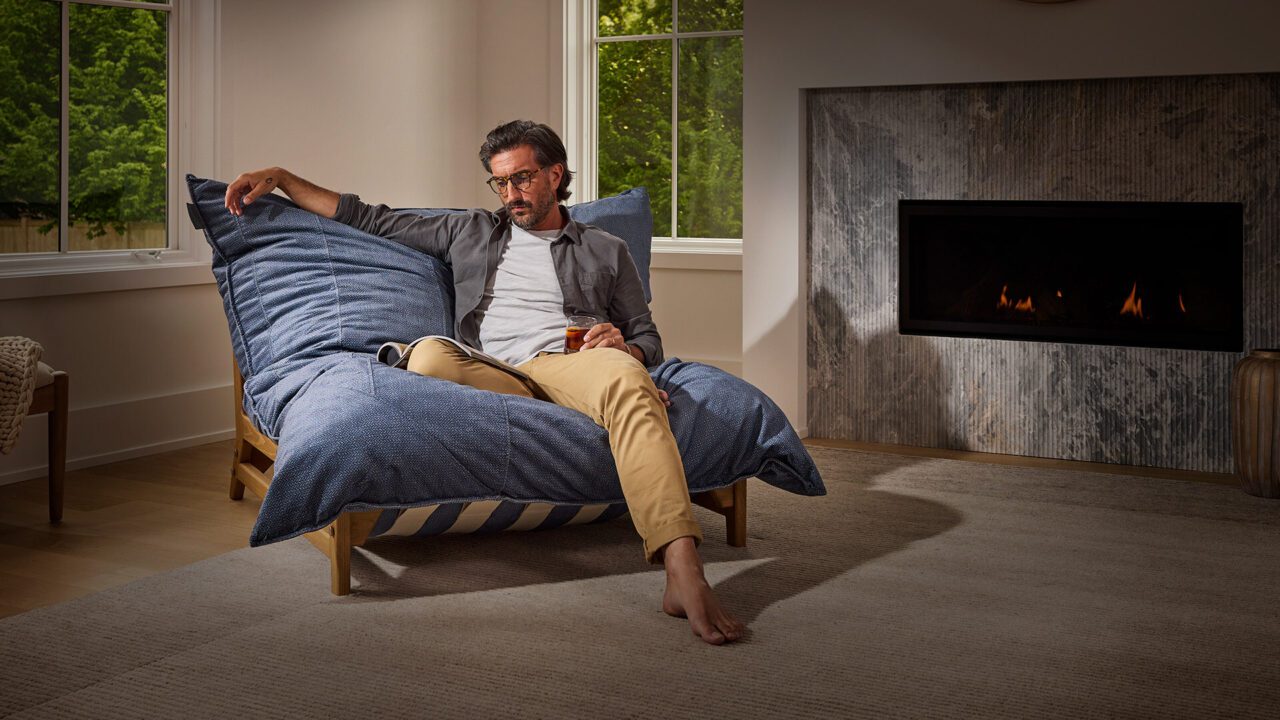
The products themselves are also produced sustainably, of course, although that’s not a core selling point. “Everyone’s talking about water bottles; we’ve recycled more plastic bottles into fabric than probably all the shoe and T-shirt companies combined because we’re making giant couches and all the upholstery fabric is made from 100% plastic bottles,” said Nelson. “But you wouldn’t necessarily know that because we don’t lead with that, because no one actually cares. They want to care, people kind of care, but what they really want is a product that meets their needs, whatever that is.
“And honestly, the impact between recycling some bottles into your fabric or actually making a couch that could go 30, 50 years with you — that’s what makes the real difference,” Nelson added. “A third of our landfills are furniture. Ikea is fantastic in the sense that they have more solar panels on the roofs of these massive buildings than anyone except Walmart, and they’re building forests in Scandinavia, but meanwhile we all know what happens to that furniture. We’re very proud of making stuff that actually sustains. For us, that is the message.”
With a name like Lovesac it’s a fair question to ask if Nelson considers himself a hippie, but he said he prefers to think of himself as a pragmatist. “I think that’s part of the reason this message works,” he said. “A lot of people don’t want sustainable stuff, because they know it’s going to be worse; they’re going to pay a ton for it and maybe even get less. In our case, you’re going to pay more and you’re going to get more, a lot more. You may not even appreciate the Sactional until you’re seven years in and your kids, pets and six relocations have helped you observe the reasons that this was the best thing you ever bought. That’s the kind of brand we’re hoping to build — a brand that can actually be trusted, that gives you more than you even thought you were getting in the beginning.”
Of course, one of the reasons many companies don’t design products this way is because it cuts down on repeat purchases, but Nelson said that the adaptability of the Sactional, as well as new add-ons like StealthTech, keep customers coming back. “Would it be better business, from a dollars and cents perspective, to just to sell them another $10,000 couch? Sure, but that is not how we’re doing things, and I’m very open about that with our investors,” said Nelson.
It’s a conscious, targeted pushback against the now commonly acknowledged practice of “planned obsolescence,” wherein products are designed to fail or break after a certain period of time in order to force consumers to buy a new version. “It is a crime against humanity and the biggest, best companies in the world are the perpetrators,” said Nelson. “Our stated purpose at Lovesac is to inspire humankind to buy better stuff so they can buy less stuff.
“Look, you don’t have to be a genius to imagine what a Designed for Life phone could look like, but to get a company to do it [is hard],” added Nelson. “So what’s the end result? You love Apple for all the reasons you love Apple but you also kind of hate them. I’m trying to build a brand that you can love and love. It’s hard, and it’s going to take another 25 years. I didn’t start out with this vision, but because of the way things unfolded I’m totally and completely committed to it. You’re going to see Lovesac continue to tamper with other product categories over time with this same approach. It will be hard, we’ll have to fight our way in, but we will slowly and steadily build a brand that can be loved and trusted. That is the mission.”



